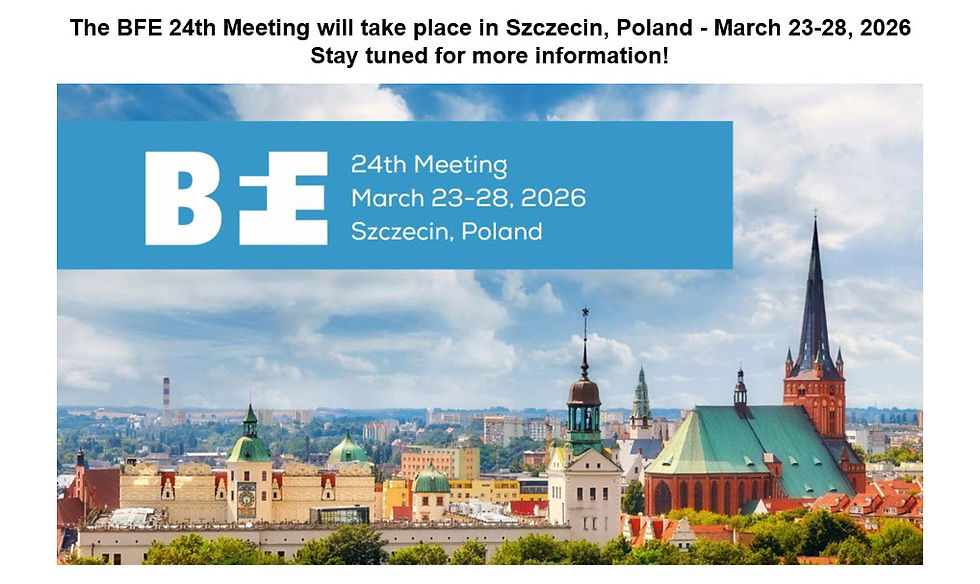5-Second Science: What Does Serotonin Signal?
- BioSource Faculty
- Apr 7
- 5 min read
Updated: 11 minutes ago

A new theoretical model of serotonin function, proposed by Harkin et al. (2025) and discussed by Rachel Sharp in BrainPost, offers a comprehensive explanation for the activity patterns of serotonin-producing neurons.
Prospective Code for Value
Serotonin is a neuromodulator—a chemical messenger that regulates the activity of other neurons—implicated in a range of psychological functions such as mood regulation, sleep, and decision-making. Despite its widespread influence, the precise computational role of serotonin in the brain has remained elusive. The new framework, termed a prospective code for value, provides a unifying account of how serotonin neurons contribute to reward-based learning and behavior by predicting near-future rewards.
Serotonin Firing is Complex and Contradictory
The dorsal raphe nucleus, located in the brainstem, is the principal source of serotonin in the brain. Raphe graphic © Vasilisa Tsoy/Shutterstock.com.

Previous theories have proposed that serotonin neurons signal reward, uncertainty, surprise, or salience—each referring to different types of significance or unexpectedness in stimuli. However, no single theory has fully accounted for the complex and sometimes contradictory firing patterns observed in serotonergic neurons. For instance, why do these neurons activate in response to both rewarding and punishing stimuli, and why do they respond differently to surprise depending on the valence of the event?
Serotonergic Neurons Prioritize Abrupt Changes
The model introduced by Harkin and colleagues uses reinforcement learning—a computational framework where an agent learns to make decisions based on maximizing expected rewards over time—as its foundation. Within this framework, "value" is defined as the predicted sum of future rewards. Importantly, the model incorporates spike-frequency adaptation, a neuronal mechanism in which prolonged stimulation leads to reduced firing rates. This feature allows serotonin neurons to filter value signals temporally, making them especially responsive to abrupt changes rather than sustained states.
This temporal filtering gives rise to what the authors term a "prospective code for value," which emphasizes transient, meaningful shifts in predicted reward value. According to the model, serotonin neurons temporarily increase their activity when a cue signals a future reward, activate when a punishment ends (since this event increases the value), respond more vigorously to surprising rewards than to expected ones, and exhibit similar firing patterns to expected and unexpected punishments. This nuanced pattern reflects an efficient way of compressing information, highlighting what is most relevant for behavioral adaptation.
The Prospective Value Code Model Best Fits the Data
The model was validated using neural recordings from mice engaged in learning tasks involving delayed rewards. These data were compared against predictions generated by the prospective value code and by alternative models based on simpler assumptions such as reward-only or salience-only coding. The prospective model not only fit the observed data more accurately but also explained previously puzzling findings, such as the reward-specific preference for surprise and the contextual modulation of baseline serotonin activity.
These findings clarify how serotonin neurons manage to represent both positive and negative events within a single computational framework. For example, the model accounts for increased firing when punishments end—signifying a rise in value—as well as heightened activity in environments rich in rewards. It also resolves why serotonin neurons prefer surprising rewards over expected ones but do not show a similar preference when it comes to punishments. In this framework, a surprising reward causes a steep and unexpected increase in predicted value, triggering a robust serotonergic response.
Punishments, whether anticipated or not, represent a persistent low-value state; because the model uses spike-frequency adaptation to compress slow or sustained fluctuations, the firing rate remains comparatively flat in these cases. Thus, the asymmetrical sensitivity to reward surprise—but not punishment surprise—emerges naturally from the computational properties of the prospective code.
Why These Findings Matter
The implications of this model extend beyond theoretical neuroscience. Since disruptions in serotonergic signaling are central to many psychiatric disorders, including depression and anxiety, understanding how serotonin encodes prospective value may help refine therapeutic approaches. This could lead to more accurate targeting of treatments that aim to normalize or exploit serotonin-based predictions in clinical populations.
Moreover, this work underscores a broader principle of neural computation: neurons do not merely encode information passively but actively transform it to suit behavioral needs. The adaptation mechanisms seen in serotonin neurons may reflect a general strategy used throughout the brain, particularly in other modulatory systems like dopamine or norepinephrine. This suggests that prospective coding via adaptation could be a common feature of how the brain anticipates and prioritizes future outcomes.
Key Takeaways
Prospective Value Coding: Serotonin neurons encode a filtered prediction of future reward, emphasizing sudden value increases while compressing sustained or expected signals.
Unified Theory: The "prospective code for value" reconciles previous models of serotonin function by explaining responses to both rewards and punishments within a single computational framework.
Asymmetric Surprise Response: Serotonin neurons respond more strongly to surprising rewards than expected ones but show no such preference for punishments, reflecting their tuning to positive value shifts.
Contextual Modulation: Baseline serotonin activity reflects environmental context, increasing in reward-rich settings and decreasing in punishment-rich ones.
Clinical and Computational Relevance: This model enhances understanding of psychiatric disorders involving serotonin and illustrates a general neural principle of efficient, adaptive information processing.
Glossary
contextual modulation: the phenomenon in which baseline neural activity changes depending on the reward or punishment richness of the environment.
dorsal raphe nucleus: a cluster of neurons in the brainstem that serves as the main source of serotonin for the forebrain.
efficient coding: a principle in neuroscience proposing that neural systems transform information to maximize relevance and minimize redundancy for downstream processing.
prospective code for value: a model proposing that serotonin neurons encode filtered predictions of future reward, emphasizing unexpected changes while suppressing predictable signals.
reinforcement learning: a computational framework in which agents learn to make decisions by maximizing predicted future rewards based on feedback from the environment.
salience: the perceived importance or prominence of a stimulus, which can affect neural responses.
serotonin: a neuromodulator involved in regulating mood, sleep, learning, and decision-making; primarily produced in the dorsal raphe nucleus.
spike-frequency adaptation: a neuronal mechanism where sustained input leads to a gradual decrease in a neuron's firing rate over time.
surprise: the degree to which an outcome deviates from expectation; used here to explain differential responses of serotonin neurons to unexpected versus expected stimuli.
value: in reinforcement learning, an estimate of the total future reward expected from a given state or action.
Reference
Harkin, E. F., Grossman, C. D., Cohen, J. Y., Béïque, J. C., & Naud, R. (2025). A prospective code for value in the serotonin system. Nature, 10.1038/s41586-025-08731-7. Advance online publication. https://doi.org/10.1038/s41586-025-08731-7
Support Our Friends







Comments